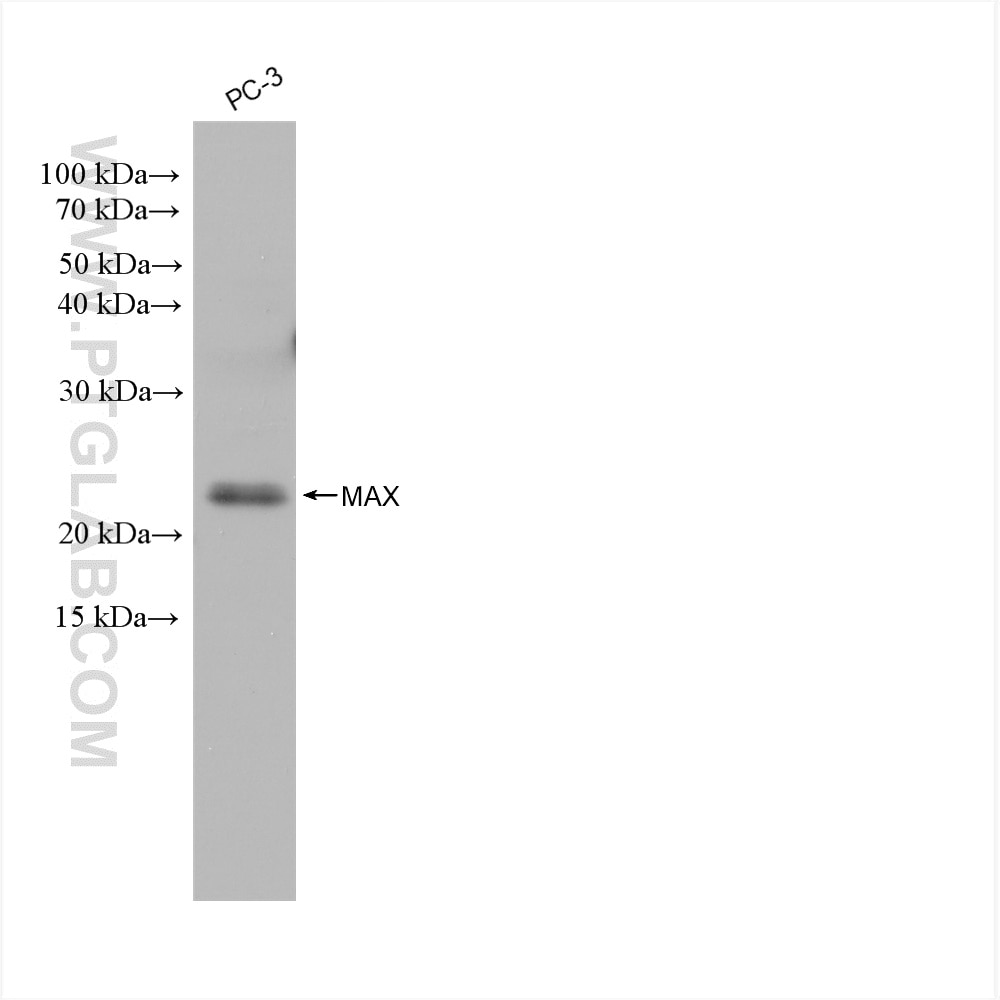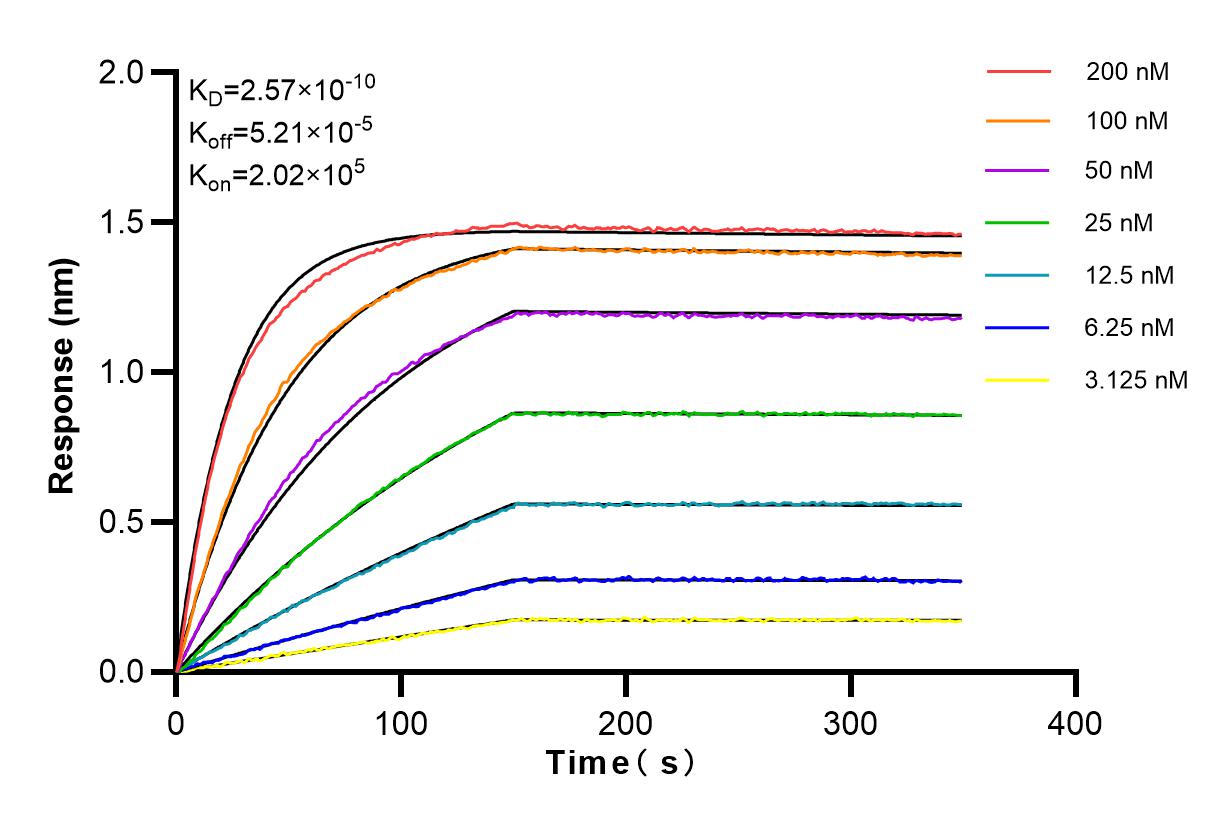Tested Applications
| Positive WB detected in | PC-3 cells |
Recommended dilution
| Application | Dilution |
|---|---|
| Western Blot (WB) | WB : 1:1000-1:8000 |
| It is recommended that this reagent should be titrated in each testing system to obtain optimal results. | |
| Sample-dependent, Check data in validation data gallery. | |
Product Information
82958-1-RR targets MAX in WB, ELISA applications and shows reactivity with human samples.
| Tested Reactivity | human |
| Host / Isotype | Rabbit / IgG |
| Class | Recombinant |
| Type | Antibody |
| Immunogen | MAX fusion protein Ag0680 Predict reactive species |
| Full Name | MYC associated factor X |
| Calculated Molecular Weight | 18 kDa |
| Observed Molecular Weight | 22 kDa |
| GenBank Accession Number | BC003525 |
| Gene Symbol | MAX |
| Gene ID (NCBI) | 4149 |
| RRID | AB_3670702 |
| Conjugate | Unconjugated |
| Form | Liquid |
| Purification Method | Protein A purification |
| UNIPROT ID | P61244 |
| Storage Buffer | PBS with 0.02% sodium azide and 50% glycerol , pH 7.3 |
| Storage Conditions | Store at -20°C. Stable for one year after shipment. Aliquoting is unnecessary for -20oC storage. 20ul sizes contain 0.1% BSA. |
Background Information
Max, a member of MAX family, contains a basic helix-loop-helix (bHLH) domain, is a transcription regulator. MAX can form a sequence-specific DNA-binding protein complex with MYC or MAD which recognizes the core sequence 5'-CAC[GA]TG-3'. The MYC-MAX complex is a transcriptional activator, while the MAD-MAX complex is a repressor. MAX could dimerizated with another bHLH protein to form a heterodimer, such MYC or MAD. Thus bands recognized by this antibody much larger than predicted.
Protocols
| Product Specific Protocols | |
|---|---|
| WB protocol for MAX antibody 82958-1-RR | Download protocol |
| Standard Protocols | |
|---|---|
| Click here to view our Standard Protocols |





